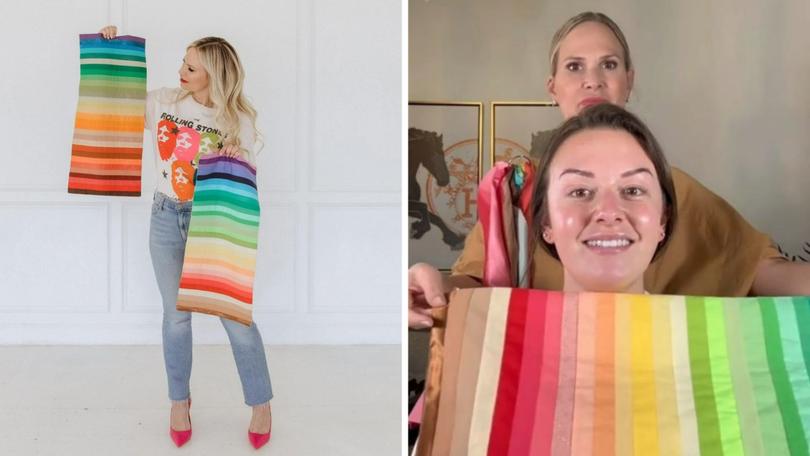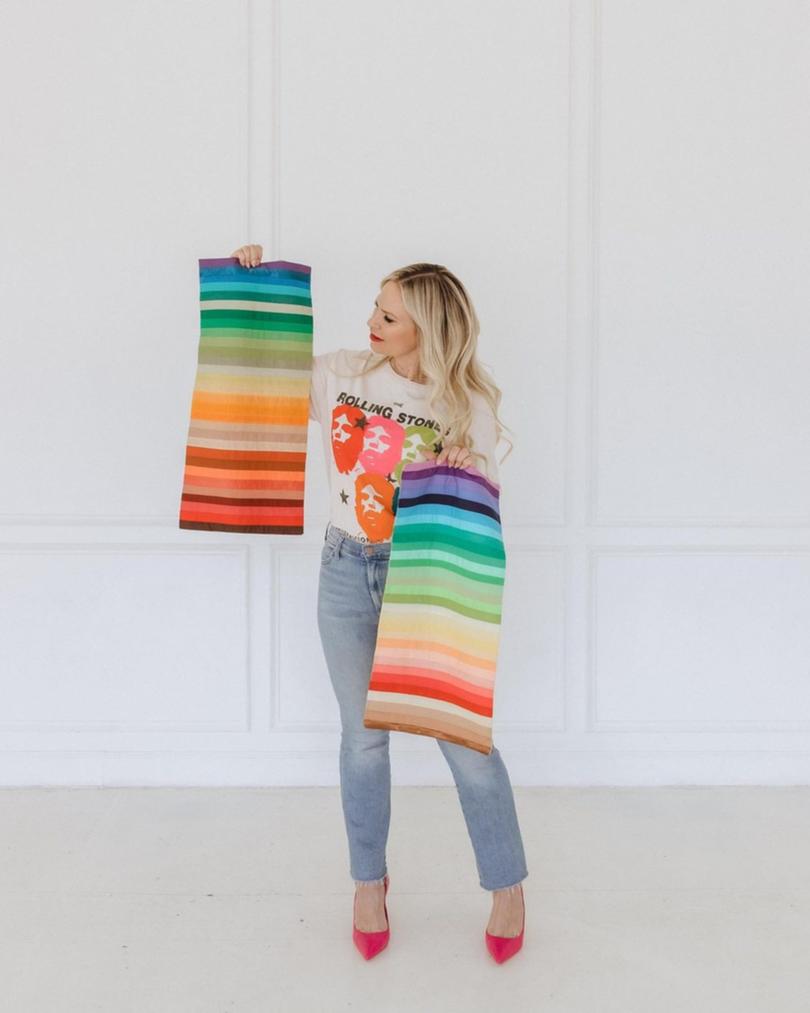The New York Times: Are You a ‘Spring’ or a ‘Winter’? It Could Cost You $500 to Find Out

A barefaced woman studies her reflection, trying on fabric bibs that could have been yanked from a production of “Joseph and the Amazing Technicolor Dreamcoat.”
In a video posted on TikTok last month, she is draped in lustrous silver, faint pink, a deep green that recalls a jalapeño pepper.
Standing behind her client as a hairdresser might, Tatum Schwerin oohs and aahs.
Sign up to The Nightly's newsletters.
Get the first look at the digital newspaper, curated daily stories and breaking headlines delivered to your inbox.
By continuing you agree to our Terms and Privacy Policy.“Stunning on you,” she says of one warm-toned tapestry. Another, with stripes of terra cotta and butter yellow, is “on the money.”
Schwerin, 44, calls herself the Color Analysis Queen on social media. She estimates that she conducts about 60 of these sessions a month at her home in Frisco, Texas, with the goal of identifying a palette that best suits a person’s skin, hair and eye colours.
Each 90-minute consultation costs $479. Schwerin said she was having trouble keeping up with demand.
Schwerin is among a wave of influencers turning seasonal colour analysis, a classification system popular in the 1980s, into a viral phenomenon as well as a lucrative business. It posits that each person’s features can be sorted into a set of shades associated with winter, spring, summer or fall, and offers clothing and makeup recommendations to match.
The system’s fans might once have attended a get-together “halfway between a Tupperware party and group therapy,” according to a New York Times article published in 1983. Now they congregate on Instagram and TikTok, where videos of Schwerin’s consultations regularly attract hundreds of thousands of views. Her biggest hit has been seen more than 30 million times.
A healthy slice of those viewers don’t see why anyone would pay nearly $500 to be told that they look pasty in blue.
“Watching these I feel the same as when someone shows me their baby sonogram,” a commenter wrote on one of Schwerin’s videos. “I DON’T SEE IT.”
Schwerin, a former stylist who took two online courses on colour analysis, is undeterred. “I always like to say, ‘Have you tried on lipstick?’” she said. If so, “you surely can recognize that not all colours are equal on your skin.”
The idea of colour seasons was popularised in part by Carole Jackson’s 1980 bestseller “Color Me Beautiful.” Jackson offered four seasonal palettes that drew from the colours present in nature at that time of year: rich golds and browns for autumn, icy blues and whites for winter and so on.
Jackson, who ran a thriving business training colour consultants, argued that a person’s season could be determined by the colours that made them look the perkiest. “See how Summer Mary looks drab in the yellow-tone camel and orange lipstick,” she wrote of a model in the book, “but comes to life in the pink shirt and pink makeup tones that are so complementary to her natural coloring.”
Sarah Novio, 34, noticed colour analysis taking over her social media feeds last year and began uploading her own videos about celebrities, including Rihanna and Jameela Jamil. “Even though there was a lot of colour analysis, I didn’t see a lot of people talking about people of colour or people with more melanin in their skin,” she said.
Novio uses Photoshop to test out swatches of different hues next to a person’s face. She tries to determine whether a person’s “undertones” are more yellow (warm) or bluer (cool), and if they look better to her in bright or muted colours, occasionally consulting the colour wheel that she learned about in art school to make her recommendations.
Humans are sensitive to extremely fine differences in facial complexions, said Bevil Conway, a neuroscientist and artist who has studied how humans see colour. It is true that our perceptions of those colors may shift based on how they contrast with the clothing or makeup around them.
Still, he was sceptical of the strict prescriptions offered by some colour analysts. “People take a little grain of science, and then it gets inflated to become a whole world,” Conway said. What is “flattering,” he added, is highly subjective: “Using it as a tool is fine. I think starting to make normative claims about beauty is where I would draw the line.”
Luckily for colour analysis, subjectivity and disagreement tend to feed, not squash, a social media trend.
Some TikTok users post videos surrounding their faces with rainbow colour wheel filters, asking commenters to determine their colour season for them. (Professed experts tend to sneer at this approach.) Others have tried outsourcing colour analysis to ChatGPT, which seems to identify almost everyone as an autumn.

Armchair colour analysts argue in the comment sections of videos about celebrities like Jenna Ortega, Hailey Bieber and Beyoncé. Actress Zooey Deschanel posted a video last month “setting the record straight,” she wrote in the caption, that her much-debated colour season was winter.
Among the theory’s adherents, an in-person assessment remains the gold standard. Darcei Giles, a 32-year-old beauty content creator, flew 14 hours from Toronto to Seoul, South Korea, last year in part to get a colour consultation there. She said her result — “bright spring” — had helped her shop more efficiently.
“It’s almost like finding out your zodiac sign for the first time and being like, Oh my God, that makes so much sense!” Giles said.
Novio thinks colour analysis can make getting dressed less overwhelming, but she chalked up its popularity to a broader fascination with examining, rating and categorizing our appearances.
“People like to belong somewhere,” said Novio, who occasionally ignores her own “deep winter” classification to wear a favourite orange and brown striped sweater. “Being categorized in a season makes people feel that way.”
This article originally appeared in The New York Times.
© 2024 The New York Times Company
Originally published on The New York Times
